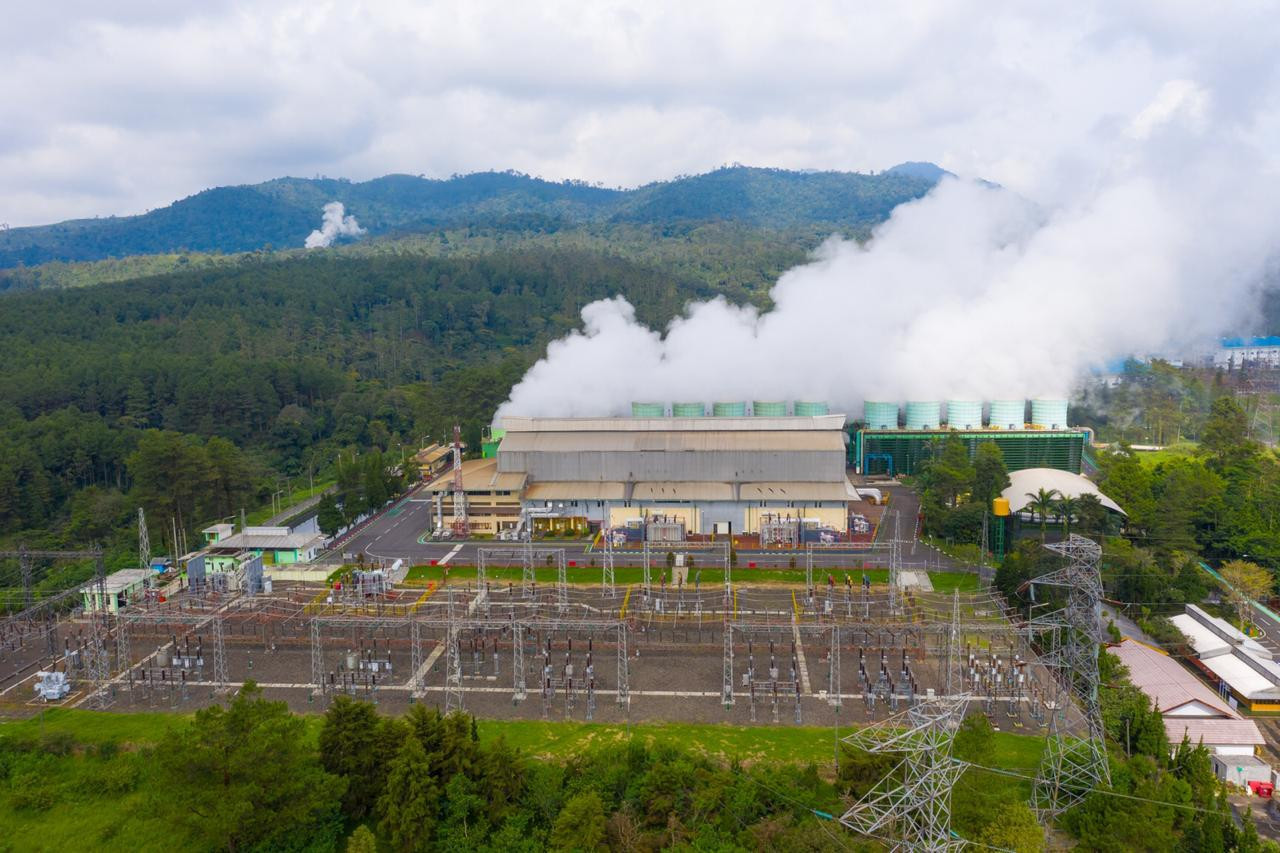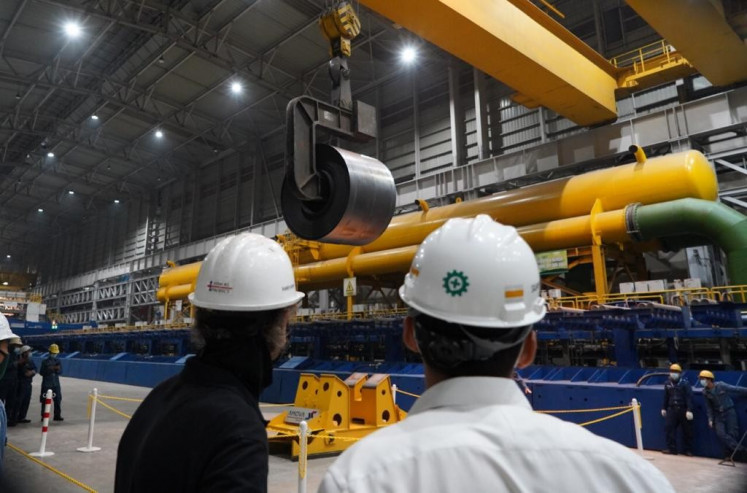Popular Reads
Top Results
Can't find what you're looking for?
View all search resultsPopular Reads
Top Results
Can't find what you're looking for?
View all search resultsHow alternative fuels could power ASEAN’s green energy transition
The problem is that green hydrogen requires green electricity, and power generation in ASEAN today is still heavily skewed toward traditional forms such as oil and coal.
Change text size
Gift Premium Articles
to Anyone
A
s the European Union ratifies its ban on CO2-emitting cars by 2035 but exempts engines that run on synthetic fuels, the debate over the use of this carbon-neutral alternative is back on the table.
Alternative fuels, such as advanced biofuel and synthetic electro-fuel, can greatly reduce the carbon footprint over their life cycle compared to traditional oil-based fuels. Consequently, this could extend the lifespan of traditional Internal Combustion Engines (ICEs) while contributing to the fight against climate change.
For Southeast Asian countries, embracing alternate fuels such as biofuel and synthetic e-fuel could catalyze energy transitions, particularly in the hard-to-abate sectors. Biofuels can result in a reduced carbon footprint if produced using advanced bio-feedstock, such as agricultural waste, rather than traditional feedstock like corn or sugarcane. Similarly, synthetic fuels can be considered low carbon if produced using hydrogen derived from renewable energy sources, such as solar, wind, or hydropower, and by capturing CO2 from the atmosphere or industrial processes.
However, the problem is that green hydrogen requires green electricity, and power generation in ASEAN today is still heavily skewed toward traditional forms such as oil and coal. This is because renewable sources are not as abundant in all ASEAN countries. As such, there is a need to continue with traditional power sources until technology costs are drastically reduced to accommodate all nations. For a region rich in the raw materials required for clean energy products, fossil fuels still comprise almost 83 percent of its energy mix.
ASEAN is the world’s fourth-largest energy consumer after the United States, China, and the European Union. Between 2000 and 2019, the demand for energy in the region grew more than 80 percent, and by 2040, it is expected to increase by a further 60 percent – driven mainly by Indonesia, Thailand, Malaysia, and Vietnam. Accelerating the green energy transition in Southeast Asia remains, therefore, critical. As more countries commit to achieving net-zero emissions in the next 40 years or less, they must consider feasible actions to turn it into a practical reality.
In March 2023, the EU established binding targets for its member states, mandating a choice between a 14.5 percent reduction in greenhouse gas intensity or a 29 percent renewable energy share in the transport sector by 2030.
Similarly, ASEAN governments should consider setting specific targets for the transport sector, focusing on diversifying energy sources with a lower carbon footprint, such as hydrogen, biofuel, and synthetic e-fuels. Alongside green energy solutions like battery-electric vehicles and biofuel, e-fuels could be a low-carbon alternative in the transport sector.
In hard-to-abate sectors such as maritime, shipping, and heavy-duty transportation that account for a large share of ASEAN’s emissions, the switch to biofuel and synthetic e-fuels could accelerate the decarbonization of freight activity in the region.
In many countries, coal-fired power plants are gradually being phased out to accelerate the energy transition. In Indonesia, “Sustainable Energy Transition” was emphasized during its Group of 20 presidency in 2022. With the goal now to produce up to 52 Gigawatt of green hydrogen by 2060, the government issued a presidential regulation for new and renewable energy (NRE) acceleration.
However, Indonesia still allows for new coal-fired power plants (CFPP) in industrial zones also signals confusion on where the policy is going and whether the government is serious about moving toward NRE.
Moreover, geothermal energy use is increasingly gaining traction, given that Indonesia has the largest geothermal potential in the world. State-owned energy giant Pertamina recently signed a joint study agreement with Singapore-based Keppel Infrastructure and global oil major Chevron to explore the development of a green hydrogen facility in Sumatra, with a production capacity of at least 40,000 tonnes per year, powered by geothermal energy.
Thailand targets 30 percent renewable energy by 2037, with the current 14.9 percent primarily derived from biomass, which constitutes 30 percent of the total renewable production. Thailand relies on cross-sector collaborations such as the Hydrogen Thailand Group, which aims to engage public and private sector players.
With Malaysia’s top two CO2 emitters being the Energy and Mobility sectors, it has likewise embarked on the transition from fossil fuel power generation to renewable energy that could be used to produce synthetic e-fuels or power electric vehicles. More than 7,000 MW of coal power purchase agreements will expire by 2033 and will not be replaced. Malaysia's Gentari and Singapore's City Energy have entered a memorandum of understanding for a joint study of developing a hydrogen supply chain through existing gas pipelines.
Government-led initiatives are just the beginning of a challenging journey. Many experts and government bodies are still questioning this approach.
High costs are stunting the widespread adoption of advanced biofuels and synthetic e-fuels. Producing and transporting hydrogen can cost up to three times more than fossil fuels. At the same time, synthetic e-fuel is only low-carbon if it is produced from renewable electricity, which is not yet as widely available in this region.
This is because NRE power can still be expensive in the ASEAN region even after the tariff changes. Furthermore, the capacity produced is not as high as the energy from CFPP hence it is more economical to purchase from CFPP.
With rising interest rates, green financing could potentially hit a speed bump. Banks prefer to fund projects with long-term purchase agreements, mature technologies in established markets, and clear regulations to mitigate risks. This could hamper the development of energy decarbonization projects.
The limited infrastructure is another problem. Only about 4500 kilometers of hydrogen pipelines are currently in use; to become a success, it would need additional investment for transportation, conversion, and storage. Renewable energy sources are location-specific, and building NRE power plants in rural areas would be costly and challenging.
In Indonesia, many geothermal projects are heavy in Java and Sumatra because the supporting infrastructure (road, seaport, airport) is more readily available. However, combining solar, other forms of renewable energy like biogas and biomass, and microgrid may be useful for more areas outside Java and Sumatra.
All in all, practical and pragmatic actions trump perfectionism.
ASEAN government bodies should not let perfection stand in the way of delivering affordable, accessible, and secure energy vital to the world and its citizens today.
Stakeholders need to connect and mobilize financial sources. We need dialogue with donor governments, multilateral development banks, private sector finance, and revenue support systems (e.g., contract for difference) to support and finance the means to shift investments from fossil fuels to supporting clean energy. Reallocating fossil fuel subsidies for the renewable energy needed for alternate fuels or introducing carbon pricing are just a few ways of enhancing the strong economic and financial arguments favoring the acceleration of the transition towards clean, efficient energy systems.
Overcoming these hurdles will only propel the ASEAN region towards a safer and more equitable energy system that can support its long-term growth and bring it closer to realizing the Paris Agreement’s goal of reaching net zero emissions by 2050.
***
Trung Ghi is a partner at Arthur D. Little and head of the energy practice for Southeast Asia. Somnath Kansabanik is a manager at Arthur D. Little Southeast Asia.











